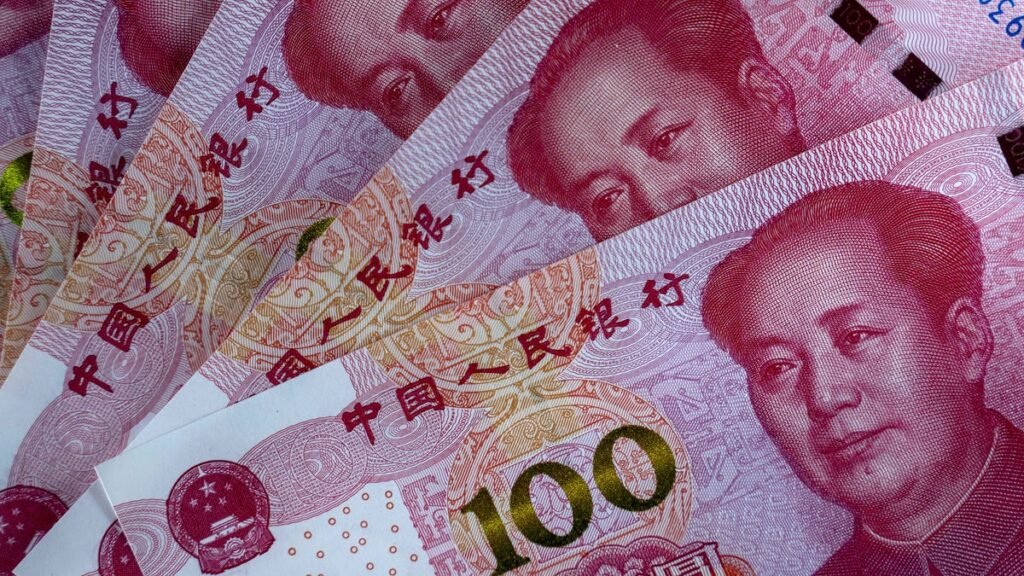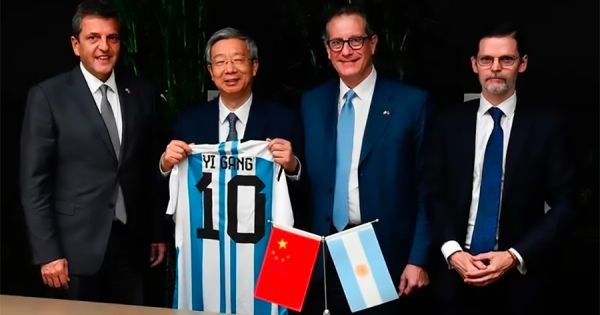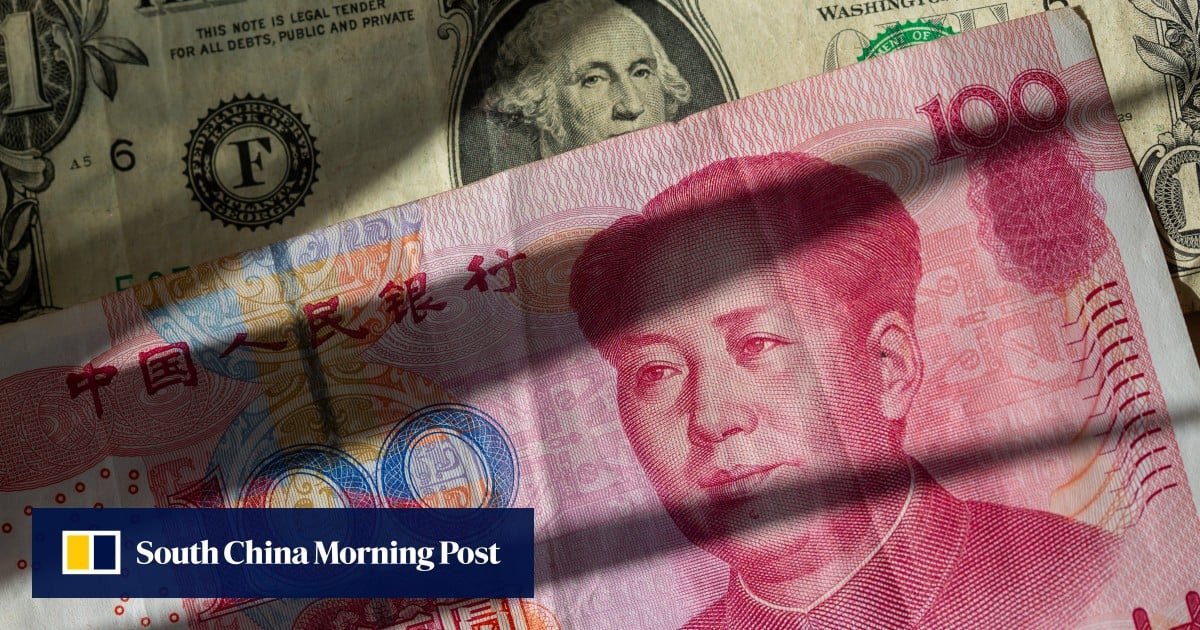China is leveraging its position as the world’s largest creditor to help broaden usage of the yuan, offering overseas borrowers the chance to benefit from economically-depressed interest rates at home by ditching the dollar.
Ethiopia became the latest this week in looking to convert at least part of the $5.38 billion owed to Beijing into yuan-denominated loans. A growing number of sovereigns is also seizing on cheaper Chinese financing via bonds.
But the strategy is coming at a price to China, forcing it to stomach some losses along the way as domestic rates hover well below those on the dollar. Kenya said it cut annual debt-servicing costs by $215 million by converting its Chinese railway loans from dollars earlier this month.
“If the borrowers pay less, then the lender gets less,” said Michael Pettis, a senior fellow at the Carnegie Endowment for International Peace. “The benefit for China in exchange for less revenue is that the renminbi becomes a more internationally-used currency.”
People with knowledge of official thinking said China supports converting dollar loans originally intended to pay for its goods and services.
Such an approach makes it easier for borrowers to pay for Chinese merchandise in yuan, elevating the currency’s role in trade settlement and financing, the people said, asking not to be named because they weren’t authorized to speak publicly. The same principle could apply to new loans extended to countries beyond Africa, one of the people said.
What makes the trade-off worthwhile for China is that it’s embedding the yuan deeper in international commerce and payments, blunting the financial edge of the US at a time when the world’s two biggest economies are at loggerheads. It’s also entrenching influence in Africa, a continent that’s become a much bigger destination for Chinese exports after Donald Trump ratcheted up US tariffs.
While China ends up getting less in interest by swapping bilateral loans from dollars to yuan, it’s focusing on wider issues, according to Pettis.
“China’s concern is that US control of the main international currency gives it strategic leverage,” such as being able to impose sanctions through the dollar-centric financial system, he said.
Geopolitical calculus aside, a bigger global footprint for the yuan has become possible because China’s persistent deflation pressures and economic slowdown are warranting a loose monetary policy in response.
The rate differential between the US and China is enabling borrowers to lock in a favorable cost of capital just as many global investors look to diversify away from the dollar after Trump’s erratic policies at home and abroad.
Already this year, Hungary and Kazakhstan sold bonds denominated in the Chinese currency, while Sri Lanka announced it would take a yuan loan equivalent to $500 million for a highway project. Indonesia is meanwhile planning its first offshore yuan bond sale.
Governments, policy banks and international bodies have issued a combined 68 billion yuan ($9.5 billion) of debt and loans as of October this year, according to data compiled by Bloomberg, double the total for the whole of 2024.
Zambia, which also owes billions of dollars to China, is watching Kenya’s deal “with keen eyes,” Finance Minister Situmbeko Musokotwane said in an interview last week.
“Anything that reduces the debt burden of Zambia – saves money in a true sense – that is something that is of course always interesting,” he said. “We’ve not yet made a decision on that particular issue, but we are observing and watching what is happening.”
While Beijing has officially said little and never confirmed discussions around the loans, the Ministry of Foreign Affairs pledged a commitment to “promote practical cooperation with Kenya and other African countries, and make China’s contribution to help Africa achieve independent and sustainable development.”
Yufan Huang, a predoctoral fellow at the China-Africa Research Initiative of Johns Hopkins University, listed Laos, Djibouti, Congo, Mozambique and Senegal among low-income economies that might seek a Kenya-style deal with Beijing.
“Other countries in need of relief may ask for a similar deal, but the currency switch alone may not be able to solve their problems of unsustainable debts,” he said. “Deeper reprofiling or restructuring may be needed.”
Bilateral currency swaps are another part of China’s push for greater international adoption of the yuan, an arrangement that about 30 countries around the world have with the central bank in Beijing.
“China is trying to establish an ecosystem for the yuan with more scenarios where it can be used,” said Ding Shuang, chief economist for greater China and north Asia at Standard Chartered Plc. This includes encouraging other countries to use the currency in bilateral trade and invest in yuan-denominated financial products, he said.
Years of lending abroad by China have created a huge potential pool of economies that could benefit from revamping their liabilities. The world’s 78 poorest countries under a definition used by the World Bank have about $67 billion in outstanding debt to China, according to Kevin P. Gallagher, a professor of global development policy at Boston University.
“If China refinances its debt to countries for longer terms and lower interest rates it will give these countries much needed fiscal space,” said Gallagher. It “would be highly beneficial to refinance to that level,” he added.
China has long tried to promote the yuan’s weight globally, but the results have been meager, in part because of stringent capital controls and the central bank’s tight grip on the exchange rate.
The People’s Bank of China has been refining its priorities, however, recently vowing to keep opening up domestic financial markets and supporting foreign institutions interested in using the yuan as a funding currency.
Beijing has also widened access to its onshore repurchase markets and launched a fast payment system with Hong Kong to draw more foreigners to the yuan.
A relentless surge in local Chinese stocks has meanwhile boosted demand for the yuan, driving more investors into the onshore markets. China’s capital controls and the PBOC’s preference for stability have kept the currency steady despite its lower yield.
By contrast, the dollar has lost about 7.5% of its value against a basket of global peers so far this year, with its haven status unsettled by Trump’s chaotic tariff policies and ballooning US debt.
While the global order is in flux, Beijing is having to contend with a structural mismatch that’s left its economy overwhelmingly reliant on the currency of its chief rival. This dependence creates a vulnerability for China, especially after Washington showed it was willing to weaponize the dollar against Russia after its invasion of Ukraine.
Heavy purchases of gold by China in recent years are among signs it’s making “steady, incremental progress toward de-dollarization,” said Gabriel Wildau, managing director at advisory firm Teneo. “China and other non-Western countries will find ways to incrementally reduce their reliance on the dollar, with yuan payments becoming an increasingly viable backup option.”
Beijing’s immediate goal is to build a multi-polar monetary system in which the yuan provides a credible alternative. A more lofty ambition over the long haul is to fashion it into a true global reserve currency, reflecting China’s status as a technological and economic superpower.
In comments published by the Communist Party magazine Qiushi in September, PBOC Governor Pan Gongsheng said the international system may “evolve toward a structure where a few sovereign currencies coexist, compete, and counterbalance each other.”
But many economists say China’s low interest rates alone won’t be enough to raise the yuan’s global profile in the absence of deeper reforms.
“This interest rate configuration is unlikely to remain unchanged forever,” said Louis Kuijs, chief Asia-Pacific economist at S&P Global Ratings. “Other factors are needed to drive a comprehensive structural trend towards yuan internationalization, including easier access for foreigners to China’s financial markets.”
___
With assistance from Yuling Yang, Paul Richardson and Matthew Hill.







